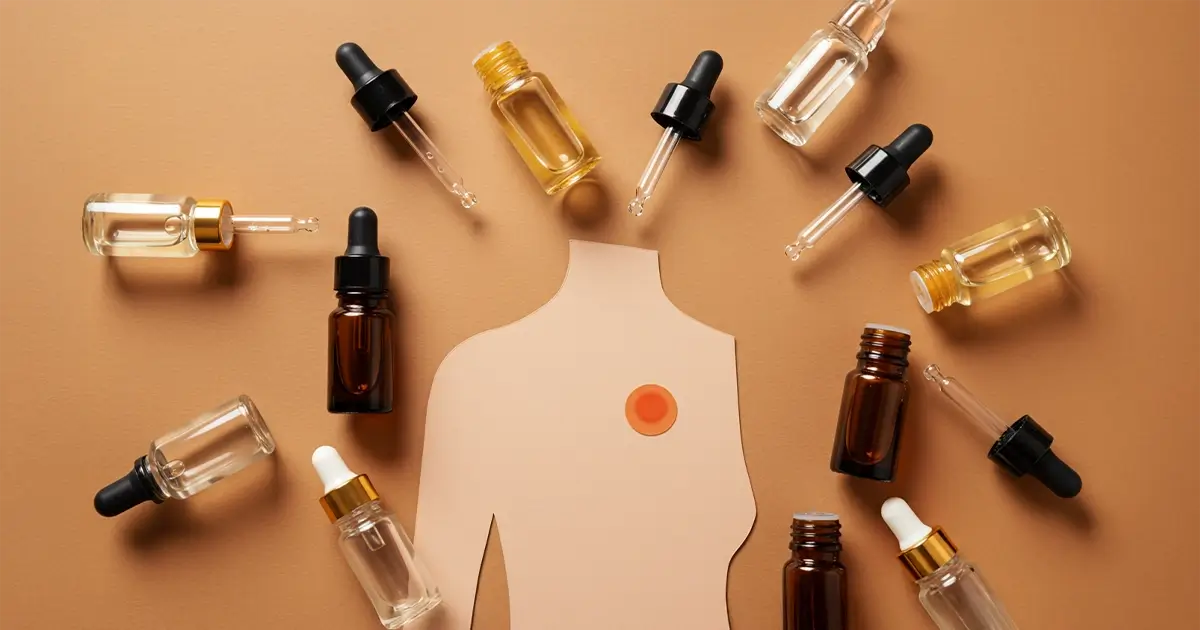Essential oils have sashayed from aromatherapy burners to bathroom shelves, yet the leap from diffuser to dermis raises big questions. Today I unpack the science, stories, and safe-use tactics behind these fragrant extracts - essential oils, skin benefits, and irritation risks - in one friendly 10-minute read.
Why We Reach for Tiny Glass Bottles
Steam-distilled or cold-pressed plant essences feel wonderfully old-world, especially when the label lists nothing but "lavender" or "rose." I understand the appeal: fewer syllables, more romance. From a chemical view, though, each drop contains dozens of strong aroma compounds that can delight noses and confuse skin barriers.
Marketing often pairs nature with safety, yet concentration matters more than origin. Essential oils are highly volatile, meaning they evaporate fast, so companies bottle them in dark glass to slow oxidation. Once air and light creep in, sensitising by-products form and the risk of redness rises.
I also see a psychological pull. Diluting an oil in carrier and massaging the blend feels like a mindful ritual. That calm can lower perceived stress, which indirectly helps skin. Still, rituals must meet reality checks, so let's see what evidence says.
Common beauty promises swirl around clearer pores, brighter tone, and relaxed mind. The next sections separate well-designed studies from compelling anecdotes.
Evidence-Based Benefits (Yes, They Exist)
Tea Tree Oil for Blemish Control
A randomised controlled trial showed that 5 percent tea tree gel lowered inflammatory acne lesions by about forty percent over six weeks PubMed. That reduction rivals low-strength benzoyl peroxide without the same bleaching risk. Participants did report mild dryness, but no serious reactions.
Terpinen-4-ol, the star compound, disrupts Cutibacterium acnes membranes and calms cytokine cascades. I like to remind readers that diluted gel formulas, not neat oil, were tested. Copying the study means respecting the recipe.
Lavender's Soothing Reputation
A laboratory investigation from a South Korean university found that lavender oil and its main ester, linalyl acetate, reduced inflammatory markers in an atopic dermatitis model full text. Researchers also noted minimal irritation in controlled settings, though patch testing came first.
Lavender's appeal is multisensory: calming scent, potential anti-itch effect, and a nod to Provençal spa fantasies. For sensitive noses the aroma alone can lower perceived anxiety, which, in turn, tempers stress-induced flare-ups.
Chamomile and Redness Relief
Matricaria recutita (German chamomile) contains azulene, giving post-distillation oil a deep blue hue. Azulene's anti-inflammatory credentials date back to 1950s wound-healing papers. Modern in-vitro work shows decreased prostaglandin release, hinting at benefits for rosacea-prone cheeks, though large human trials remain sparse.
The Irritation Spectrum (Read Before You Slather)
The Journal of Integrative Dermatology recently highlighted that oxidised lavender, limonene, and tea tree fractions are moderate allergens, contributing to patch-test positivity in up to five percent of dermatitis patients study. That means "natural" does not equal "risk-free."
Contact dermatitis manifests as itching, swelling, and tiny blisters. Because reactions can appear days after exposure, people often blame the wrong product. A diary helps, but a dermatologist-run patch test is the gold standard.
High-risk oils include cinnamon bark, clove, lemongrass, and oregano - great in pasta sauce, fierce on epidermis. Lower-risk but still cautious picks are frankincense and rose. When in doubt, dilute.
Why Concentration Is King
Most clinical research uses 0.5–5 percent essential oil in carrier. Neat application skips safety margins and leaves skin absorbing undiluted terpenes. Think hot espresso versus latte: same beans, totally different burn potential.
Carrier choices matter too. Grapeseed and jojoba lipids resemble skin sebum, enhancing spreadability. Mineral oil, though inert, sits on top and reduces penetration. Pick a carrier that suits texture and allergy profile.
Allergic Versus Irritant Reactions
An irritant response shows quickly - stinging within minutes. Allergic contact dermatitis takes longer because it is immune-mediated. Misreading one for the other leads to endless product hopping. My rule: quick burn equals dilution issue, delayed rash equals stop completely and consult a professional.
Smart Usage Guide
Patch testing sounds boring, yet it saves cheeks and bank accounts. Apply a coin-sized diluted drop inside your elbow, cover with a plaster, and peek after 48 hours. No redness? You may proceed. Hives? Bin the concoction.
- Choose dilution: 1 drop essential oil to 1 teaspoon (5 ml) carrier for face, 2 percent is usual for body.
- Blend in a glass bottle, label the date, and store in a cool drawer. Oils oxidise, and old citrus oils are sneakier irritants.
- Limit initial use to twice weekly. I love enthusiasm, but skin loves patience.
Now, here's the fun part: layering. Apply your blend after water-based serums and before occlusive creams. This sequence seals in hydration while avoiding clogged pores.
Who Should Skip or Limit
Anyone with a compromised barrier - think broken eczema plaques or a fresh chemical peel - should hold off. Essential oils can traverse micro-fissures and amplify sting.
Pregnant readers often ask about safety. Research is thin, so most obstetricians advise avoiding potent oils like clary sage, which may mimic hormonal activity. When uncertainty looms, fragrance-free moisturisers are safer hugs for your bump.
If rebuilding your barrier is priority, peek at my earlier deep dive on ceramides: Rebuilding Barrier for Strong, Calm Skin. Strengthened walls fend off would-be irritants.
FAQ
Are essential oils safe for acne-prone skin?
Some, like diluted tea tree, show promise, yet heavy or fragranced blends risk clogging pores. Start with a 1 percent formula, patch test, and monitor breakouts for two weeks.
Can I dot pure oil on a pimple?
I would not. Spot treating with neat oil looks efficient but can scar fragile tissue through chemical burn. Buffer it in aloe gel or a bland carrier.
What dilution ratio counts as safe for faces?
One drop per teaspoon of carrier (about 0.5 percent) suits most skin. Those with hardy complexions may inch toward 1 percent, but stop if warmth or redness appears.
Which oils trigger allergies most often?
Cinnamon, clove, ylang-ylang, and oxidised lavender top dermatology patch-test charts. Always check expiry dates and store citrus oils in the fridge.
Do essential oils expire?
Yes. Light, heat, and oxygen break down terpenes, forming aggressive by-products. Replace citrus oils yearly and woody oils every two years to stay on the safe side.
Conclusion
Essential oils straddle the line between botanical therapy and potent chemical cocktail. Evidence supports benefits for acne and mild inflammation, but concentration, freshness, and individual sensitivity decide success.
I hope today's tour helps you blend confidence with caution. See you in the next post - until then, take good care of your skin!


Comments (0)
No comments yet - be the first to share your thoughts!
Leave a Reply
Your email address will not be published. Required fields are marked *